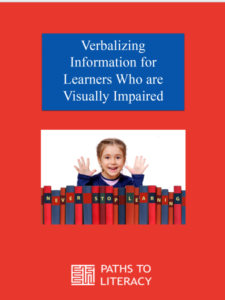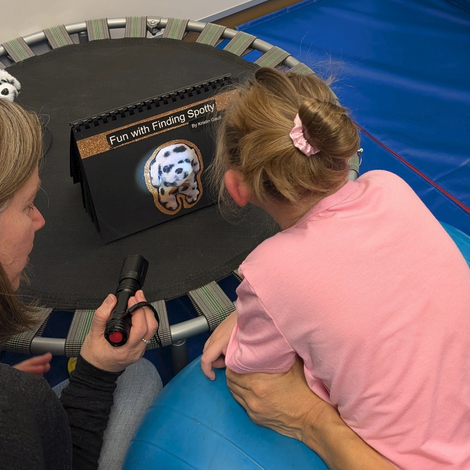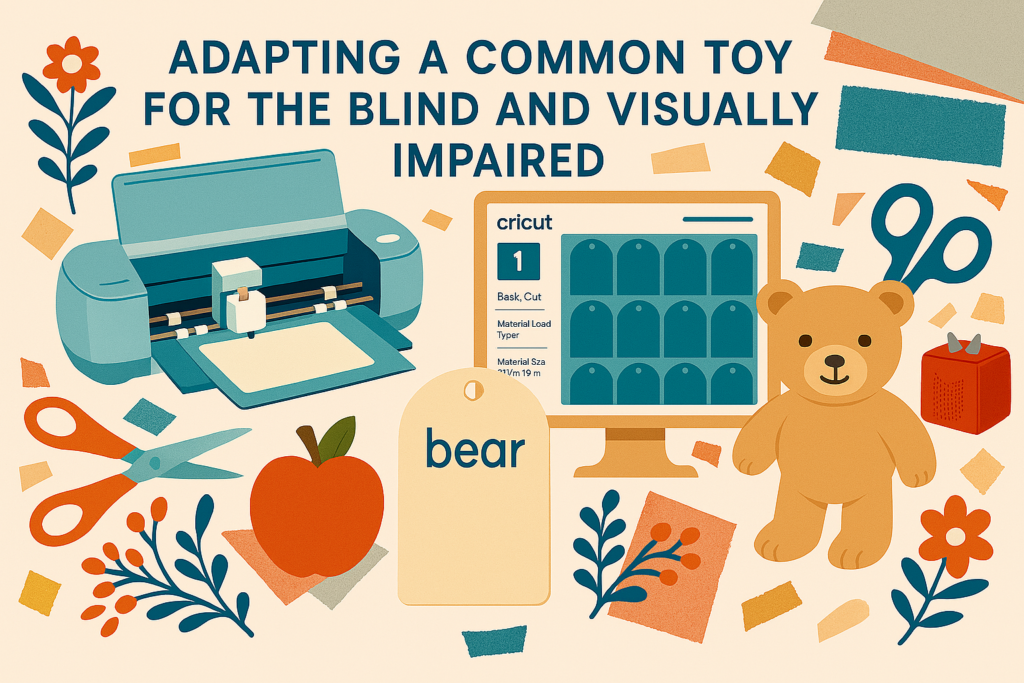Creating a learning rich environment for children who have a visual impairment through verbalization and auditory input provides meaningful experiences. If you are a parent or educator, especially of young children, there are some cornerstones during everyday learning activities that should take place. These can include directional cues, descriptions of visual materials, verbal identification, and other adaptations.
Incidental Learning
Incidental learning visually is the information you receive with your eyes without even knowing it. We learn so much from the visual input around us and our experiences. Challenges posed by lack of access to incidental learning continue to pose barriers across a person’s lifetime without support and consideration for accessibility, as reported by CVI Now in their article Incidental Learning Opportunities for the CVI (Cortical/Cerebral Vision Impairment).
For children with visual impairments, verbalization of information that our sighted learners have access to is a necessity to create better learning opportunities.
Non-Verbal Communication
“Non-verbal behaviors provide us with a lot of information about conversations and interactions. Students who are blind will not be able to perceive nonverbal communication and students with low vision may not be able to perceive subtle nonverbal communication.
“Almost all social skills used by sighted children and adults have been learned by visually observing the environment and other persons and conducting themselves in socially appropriate ways based on those observations. Students with visual impairments must be taught when and how to smile, frown, nod, wink, shrug, and many other non-verbal communication skills,” as reported by Carmen Willings at Teaching the Visually Impaired.
We can also verbalize this to the child when someone else is using non-verbal communication. If someone puts a thumbs-up as a cue, then we should let the child know what just took place.

Ways to Create Adaptations
- Plan in Advance: Students may need specific lessons ahead of time with explanations of materials, content, environment, and people who will be with them in the activity.
- Use Verbal Identification: Let them know who is around. When people arrive in the room they should identify themselves so the child knows who is in their area and when they leave.
- Descriptors: Provide descriptions of visual materials and the environment around them. For example, if you are showing a picture to the group, describe what they are looking at as well. Or, if you are at the grocery store, communicate what is around to provide a more enriching experience.
- Provide Frequent Directional Cues: Directional cues need to be taught at an early age and having a Certified Orientation and Mobility Specialist (COMS) is an integral part of the support team. Using directional cues provide the ability to understand the materials around the child. Up/down, left/right, over/under, in front/behind are all concepts that need to be taught and used regularly. More about Orientation and Mobility
- See or Look: Using words like “see” or “look” is acceptable language to use. For example, “Look at the doll sitting on the table.” The student will then have the opportunity to reach out and explore the doll tactually.
Information for Students with Vision and Hearing Loss
Children who are deafblind function at all different levels, depending on a number of factors, and there are additional considerations for these students when verbalizing information.
Inclusion
The most important part when making adaptations so a child with a vision impairment can be more immersed in learning throughout the day is inclusion. By verbalizing visual information it provides greater inclusion.





